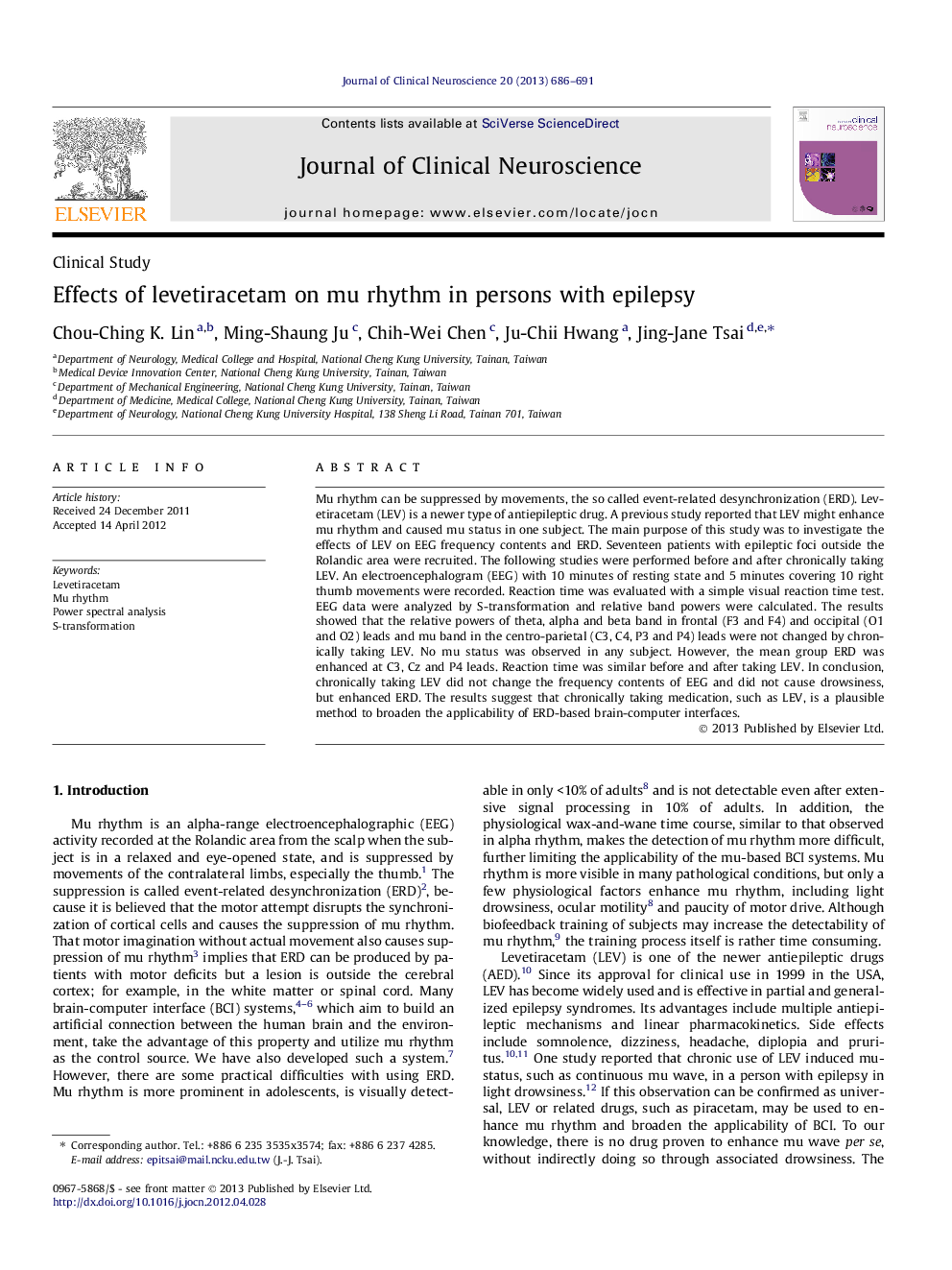| Article ID | Journal | Published Year | Pages | File Type |
|---|---|---|---|---|
| 3060051 | Journal of Clinical Neuroscience | 2013 | 6 Pages |
Mu rhythm can be suppressed by movements, the so called event-related desynchronization (ERD). Levetiracetam (LEV) is a newer type of antiepileptic drug. A previous study reported that LEV might enhance mu rhythm and caused mu status in one subject. The main purpose of this study was to investigate the effects of LEV on EEG frequency contents and ERD. Seventeen patients with epileptic foci outside the Rolandic area were recruited. The following studies were performed before and after chronically taking LEV. An electroencephalogram (EEG) with 10 minutes of resting state and 5 minutes covering 10 right thumb movements were recorded. Reaction time was evaluated with a simple visual reaction time test. EEG data were analyzed by S-transformation and relative band powers were calculated. The results showed that the relative powers of theta, alpha and beta band in frontal (F3 and F4) and occipital (O1 and O2) leads and mu band in the centro-parietal (C3, C4, P3 and P4) leads were not changed by chronically taking LEV. No mu status was observed in any subject. However, the mean group ERD was enhanced at C3, Cz and P4 leads. Reaction time was similar before and after taking LEV. In conclusion, chronically taking LEV did not change the frequency contents of EEG and did not cause drowsiness, but enhanced ERD. The results suggest that chronically taking medication, such as LEV, is a plausible method to broaden the applicability of ERD-based brain-computer interfaces.
